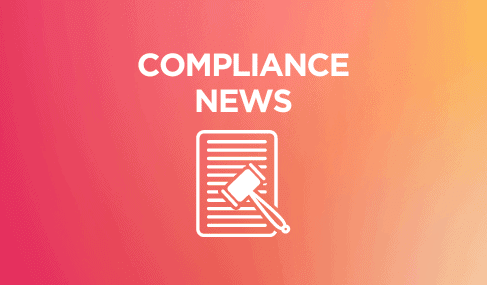
This article is is a repost from TCPA World, authored by Tory Guidry, the Dame at Troutman Firm and of TCPAWorld. Our goal is to keep our customers and industry associates up-to-date with the compliance news reported for our industry. The information on this page and related links is provided for general education purposes only and is not legal advice. Convoso does not guarantee the accuracy or appropriateness of this information to your situation. You are solely responsible for using Convoso’s services in a legally compliant way and should consult your legal counsel for compliance advice. Any quotes are solely the views of the quoted person and do not necessarily reflect the views or opinions of Convoso.
Get a recap of the latest contact center compliance news delivered monthly to your inbox. Subscribe here >
Sellers that rely on third-party lead suppliers are frequently facing trumped up lawsuits that are either entirely manufactured—or enhanced—by deceptive conduct by a Plaintiff (often a repeat litigator.)
Well, the case of Hastings v. Smartmatch, Case no. 4:22-cv-00228, 2022 WL 4002625 (E.D. Ark. 09/01/2022), opens the door to an exciting possibility that lead buyers—particularly companies accepting warm transfers—might actually be able to sue the Plaintiff in such suits, neutralizing one of the biggest headaches facing direct to consumer marketers.
In Hastings, the Plaintiff filed a TCPA lawsuit in the US District Court (E.D. Arkansas, Central Division) against SmartMatch Insurance Agency, LLC. SmartMatch then filed a counterclaim alleging fraud on the part of Mr. Hastings. Mr. Hastings, in turn, filed a Motion to Dismiss which was ultimately granted in part, but the Court certainly did not turn this away as a complete impossibility, and that’s the key take away here.
To break this case down, let’s start with the general facts leading up to the crossclaim:
SmartMatch alleged that Mr. Hastings or his agent went to a third-party site and put in a FALSE name, his phone number, and the address to his dad’s former business. The person who filled in that information consented to receive prerecorded calls regarding health insurance quotes by clicking submit. In reliance on this fraudulent information and consent, an unidentified company—not the owner of the website and not SmartMatch—called Mr. Hastings on March 27, 2021, requesting to speak with “Marvin.” That call was then transferred to SmartMatch, which lead to the suit.
When Hastings answered the phone, he:
1. never gave his real name;
2. did not bother to mention he was on the National DNC Registry (not his obligation, but I’m looking at the totality of the circumstances here so stick with me);
3. never said that he did not want to receive future calls;
4. actually made implications that the false name was his;
5. told the caller he was interested in speaking to someone about health insurance quotes.
Naturally, he was eventually put in touch with an agent to do just that. This is where SmartMatch comes in as they purchased the lead due to Mr. Hastings’ perceived interest. Nonetheless, he turned around and sued SmartMatch—a company that had never called him and seemingly only agreed to take his call—it was a warm transfer to SmartMatch, after all—because it believed he was interested in his products.
The way SmartMatch figures it, Plaintiff’s LIES to the unnamed third party—i.e. that he was interested in a product when he was really just interested in suing somebody—constituted FRAUD.
SmartMatch alleged it relied on this allegedly fraudulent information provided by Hastings or his agent to the third-party website in spending the resources needed to take the call, and in paying for the lead.
The Plaintiff didn’t like being sued for fraud and moved to dismiss the Counterclaim, arguing that it failed to assert the specific circumstances of the alleged fraud, as required by Rule 9.
The Plaintiff’s motion was GRANTED—meaning that the fraud claim is kaput—but it is not all bad news. In fact, the Court left the door more than a little cracked open—potentially empowering similar suits anytime a fake lead is submitted by a litigator.
To understand how to leverage this argument you first need to understand why SmartMatch DIDN’T win.
First let’s start with Arkansas common law fraud (even though the TCPA is a federal statute, claims regarding fraudulent leads are determined under basic state law fraud standards.) There are 5 elements that must be met:
“(1) a false representation of a material fact;
(2) knowledge that the representation is false or that there is insufficient evidence upon which to make the representation;
(3) intent to induce action or inaction in reliance upon the representation;
(4) justifiable reliance on the representation; and
(5) damage suffered as a result of the reliance.” Tyson Foods, Inc. v. Davis, 347 Ark. 566, 580, 66 S.W.3d 568, 577 (2002).
Because this is a fraud claim, the allegations establishing each of these elements must be pleaded with specificity under Rule 9(b) and not just the typical “plain statement” of the case/plausibility standard of Rule 8.
The Court in Hastings simplified the particularity requirement as requiring the pleader to identify the “…’who, what, where, when, and how’ of the material misrepresentation.”
The Court took no issue with SmartMatch’s “where,” “when,” and “how” allegations. The “who” and the “what,” however, hung SmartMatch up.
The “who” alleged by SmartMatch was not just Hastings. It was Hastings or his agent. This Court found this allegation was insufficiently specific since it does not actually identify who made the alleged fraudulent statement.
SmartMatch’s counterclaim also failed on the “what” identification. Rule 9(b) requires that the allegation of fraud specifically describe the content of a misrepresentation. The main issue the Court pointed out was that they did not “allege the specific language of the consent disclaimer associated with the electronic submission of personal information.”
The Court also addressed the damages requirement for a claim of fraud. The Court seemed to imply that only the calling party could have suffered any damage as a result of the fraud, but in a footnote the court suggested it may want to clarify who is paying the cost of defending the action—which is a pretty big hint in terms of the types of damages that might be recoverable here.
Hastings is good news for sellers who are transferred calls that were made to litigators. While it can often be difficult to determine whether or not the underlying lead—often purchased from a downstream partner—is valid, it is generally easy enough to determine whether the litigator feigned interest in the product to enable a transfer. Hastings seems to suggest that even where an underlying lead was invalid the act of a litigator feigning interest in a good or service is itself sufficiently fraudulent to permit a counterclaim. That would mean sellers who are transferred calls may be able to see a form of indemnity from the Plaintiff him/herself in suits where the case only proceeded due to the caller party’s conduct of pretending to want the calls at issue.
If Hastings is extended it could be really good news for lead buyers—whereas the parties that actually placed the call would still be liable (their calls were made independent of the subsequent representations.) So the consumer would not actually lose a remedy here. They would just lose the ability to sue the innocent lead buyer. Seems like everybody wins.
Get a recap of the latest contact center compliance news delivered monthly to your inbox. Subscribe here >
